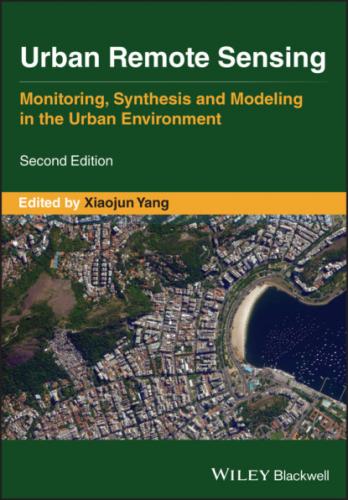REFERENCES
1 Alonzo, M., Bookhagen, B., and Roberts, D.A. (2014). Urban tree species mapping using hyperspectral and LiDAR data fusion. Remote Sensing of Environment 148: 70–83. doi:10.1016/j.rse.2014.03.018.
2 ASPRS (American Society for Photogrammetry and Remote Sensing) (2013). LAS Specification Version 1.4 ‐ R13, 15 July 2013. https://www.asprs.org/wp‐content/uploads/2010/12/LAS_1_4_r13.pdf (accessed 11 November 2019).
3 Axelsson, P. (1999). Processing of laser scanner data: algorithms and applications. ISPRS Journal of Photogrammetry and Remote Sensing 54: 138–147. doi:10.1016/S0924‐2716(99)00008‐8.
4 Babahajiani, P., Fan, L., and Gabbouj, M. (2015). Object recognition in 3D point cloud of urban street scene. Asian Conference on Computer Vision, ACCV 2014 Workshops, 177–190. doi:10.1007/978‐3‐319‐16628‐5_13.
5 Bagheri, H., Schmitt, M., d'Angelo, P., and Zhu, X.X. (2018). A framework for SAR‐optical stereogrammetry over urban areas. ISPRS Journal of Photogrammetry and Remote Sensing, 146: 389–408. doi:10.1016/j.isprsjprs.2018.10.003.
6 Balk, D.L., Nghiem, S. V., Jones, B., Liu, Z., and Dunn, G. (2019). Up and out: a multifaceted approach to characterizing urbanization in Greater Saigon, 2000‐2009. Landscape and Urban Planning, 187: 199–209. doi:10.1016/j.landurbplan.2018.07.009.
7 Boyko, A., and Funkhouser, T. (2011). Extracting roads from dense point clouds in large scale urban environment. ISPRS Journal of Photogrammetry and Remote Sensing 66: S2–S12.
8 Brenner, A.R., and Roessing, L. (2008). Radar imaging of urban areas by means of very high‐resolution SAR and interferometric SAR. IEEE Transactions on Geoscience and Remote Sensing 46(10): 2971–2982. doi:10.1109/TGRS.2008.920911.
9 Brunner, D., Lemoine, G., Bruzzone, L., and Greidanus, H. (2010). Building height retrieval from VHR SAR imagery based on an iterative simulation and matching technique. IEEE Transactions on Geoscience and Remote Sensing, 48(3): 1487–1504. doi:10.1109/TGRS.2009.2031910.
10 Buckreuss, S., Schättler, B., Fritz, T., Mittermayer, J., Kahle, R., Maurer, E., Böer, J., Bachmann, M., Mrowka, F., Schwarz, E., Breit, H., and Steinbrecher, U. (2018). Ten years of TerraSAR‐X operations. Remote Sensing 10(6): 873. doi:10.3390/rs10060873.
11 Cheuk, M.L., and Yuan, M. (2009). Assessing spatial uncertainty of lidar‐derived building model. Photogrammetric Engineering & Remote Sensing 75(3): 257–269. doi:10.14358/PERS.75.3.257.
12 Dell'Acqua, F., and Gamba, P. (2006). Discriminating urban environments using multiscale texture and multiple SAR images. International Journal of Remote Sensing 27(18): 3797–3812. doi:10.1080/01431160600557572.
13 Dong, P., Ramesh, S., and Nepali, A. (2010). Evaluation of small‐area population estimation using LiDAR, Landsat TM and parcel data. International Journal of Remote Sensing 31(21): 5571–5586. doi:10.1080/01431161.2010.496804.
14 Dong, P., and Guo, H.D. (2012). A framework for automated assessment of post‐earthquake building damage using geospatial data. International Journal of Remote Sensing 33: 81–100. doi:10.1080/01431161.2011.582188.
15 Dong, P., and Chen, Q. (2018). LiDAR Remote Sensing and Applications. New York: CRC Press.
16 Dong, P., Zhong, R., and Yigit, A. (2018). Automated parcel‐based building change detection using multitemporal airborne LiDAR data. Surveying and Land Information Science 77(1): 5–13.
17 Dong, T., Jiao, L., Xu, G., Yang, L., and Liu, J. (2019). Toward sustainability? Analyzing changing urban form patterns in the United States, Europe, and China. Science of the Total Environment 671: 632–643. doi:10.1016/j.scitotenv.2019.03.269.
18 Dorninger, P., and Pfeifer, N. (2008). A comprehensive automated 3D approach for building extraction, reconstruction, and regularization from airborne laser scanning point clouds. Sensors, 8, 7323–7343. doi:10.3390/s8117323.
19 Ellis, E.A., and Mathews, A.J. (2019). Object‐based delineation of urban tree canopy: assessing change in Oklahoma City, 2006–2013. Computers, Environment and Urban Systems 73: 85–94. doi:10.1016/j.compenvurbsys.2018.08.006.
20 ESA (European Space Agency) (2019). ESA Sentinel Online – Missions – Sentinel‐3. https://sentinel.esa.int/web/sentinel/missions/sentinel‐3 (accessed 10 December 2019).
21 Esch, T., Thiel, M., Schenk, A., Roth, A., Muller, A., and Dech, S. (2009). Delineation of urban footprints from TerraSAR‐X data by analyzing speckle characteristics and intensity information. IEEE Transactions on Geoscience and Remote Sensing 48(2): 905–916. doi:10.1109/TGRS.2009.2037144.
22 Esch, T., Schmidt, M., Breunig, M., Felbier, A., Taubenböck, H., Heldens, W., Riegler, C., Roth, A., and Dech, S. (2011). Identification and characterization of urban structures using VHR SAR data. 2011 IEEE International Geoscience and Remote Sensing Symposium (Vancouver) 1413–1416. doi:10.1109/IGARSS.2011.6049331.
23 Esch, T., Marconcini, M. Felbier, A., Roth, A., Heldens, W., Huber, M., Schwinger, M., Taubenböck, H., Müller, A., and Dech, S. (2013). Urban footprint processor – fully automated processing chain generating settlement masks from global data of the TanDEM‐X mission. IEEE Geoscience Remote Sensing Letters 10(6): 1617–1621. doi:10.1109/LGRS.2013.2272953.
24 Esch, T., Heldens, W., Hirner, A., Keil, M., Marconcini, M., Roth, A., Zeidler, J., Dech, S., and Strano, E. (2017). Breaking new ground in mapping human settlements from space – the global urban footprint. ISPRS Journal of Photogrammetry and Remote Sensing, 134, 30–42. doi:10.1016/j.isprsjprs.2017.10.012
25 Esch, T., Bachofer, F., Heldens, W., Hirner, A., Marconcini, M., Palacios‐Lopez, D., Roth, A., Üreyen, S., Zeidler, J., Dech, S., and Gorelick, N. (2018). Where we live—a summary of the achievements and planned evolution of the global urban footprint. Remote Sensing 10(6): 895. doi:10.3390/rs10060895
26 Fang, C., Liu, H., Li, G., Sun, D., and Miao, Z. (2015). Estimating the impact of urbanization
